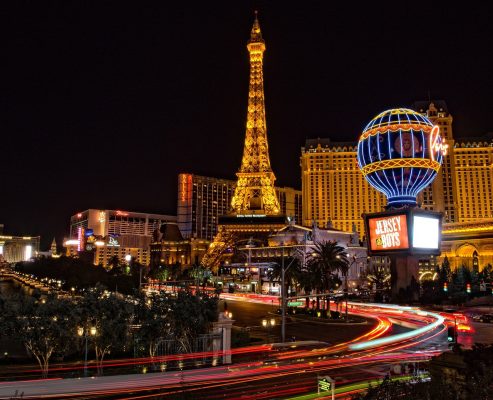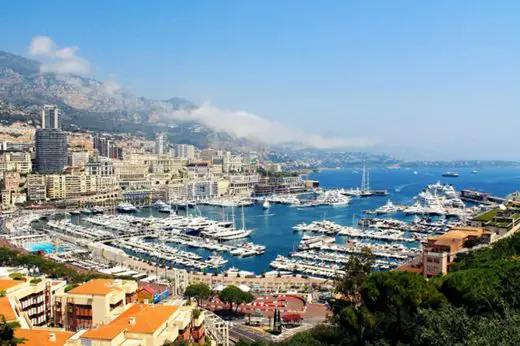The art and strategy behind casino architecture, Gambling buildings, Gaming property designs
Intricate design of casino architecture: Art and Strategy
7 August 2024
Casino architecture goes beyond the glitz and glamour of gambling; it is an intricate design strategy aimed at enhancing visitor experience. From the grand entrances to the lighting and layout, every aspect of a casino is carefully crafted to entice and retain players.
The Art and Strategy Behind Casino Architecture
The architecture not only aims to create an inviting and exciting environment but also subtly influences visitor behaviour. Sophisticated design elements, such as maze-like layouts, strategic lighting, and themed decor, work together to create a seamless blend of aesthetics and functionality.
The challenge is to create an atmosphere that captures visitors and retains them for a long time, ensuring that every detail contributes to the overall atmosphere and appeal of the casino. A more difficult task lies with the creators of casino no ID verification withdrawal UK but despite this, they are quietly managing it.
Creating an Alluring Entrance
The entrance of a casino sets the tone for the entire experience. Its primary goal is to attract passers-by and spark their curiosity. Architectural elements such as large doors, prominent symbols, and distinctive facades are designed to capture attention and draw people inside. The use of sophisticated architecture and dramatic details, often highlighted by lighting or unique shapes, creates a visual spectacle that appeals to potential visitors.
The Layout: A Maze of Excitement
Casinos are strategically designed as mazes to entertain visitors and encourage exploration. The maze-like layout is intended to increase visitor engagement and prolong their stay. By navigating through the casino floor, guests are exposed to various games, features, and attractions, which increases the likelihood of them trying different activities and spending more time and money in the casino.
Lighting and Ambiance
Lighting is crucial in setting the mood and creating the desired ambience within a casino. Various lighting techniques are employed to achieve different effects across the facility. Soft, warm lighting is used in areas like lounges, restaurants, and hotel lobbies to create a cosy atmosphere, promoting relaxation and comfort.
In contrast, cooler tones and dynamic lighting are used in gaming areas to evoke excitement and elegance. The balance between warm and cool lighting depends on the location and intended atmosphere.
Lighting Techniques in Casinos
| Area | Lighting Type | Purpose |
| Lounges | Soft, warm lighting | To create a cosy and relaxed environment |
| Restaurants | Soft, warm lighting | To promote comfort and leisurely dining |
| Hotel Lobbies | Soft, warm lighting | To welcome and relax guests |
| Gaming Areas | Dynamic, cool lighting | To evoke excitement and maintain player interest |
| Entertainment | Bright, dynamic lighting | To energise and engage visitors |
Soundscapes and Music
The sound environment in casinos contributes to a lively and spirited atmosphere. Background noise from slot machines, clinking chips, and chatter creates a dynamic environment that enhances the excitement. Background music is carefully selected to match the ambience of different areas. For example, gaming areas feature faster-tempo music to maintain high energy levels, while lounges and restaurants might play softer, more relaxing tunes.
Casino Design Themes
Many casinos incorporate unique themes into their design to provide an immersive experience. Themes range from ancient Egypt to futuristic science fiction, influencing decor, signage, and even staff attire. These themes transport guests to different worlds, enhancing the overall entertainment experience.
Popular Casino Themes
| Theme | Example Casino | Key Features |
| Ancient Egypt | Luxor | Pyramid structure, Sphinx, Egyptian decor |
| Venetian | The Venetian | Canals, gondolas, replicas of Venetian landmarks |
| Futuristic Sci-Fi | Various sci-fi-themed casinos | Modern, sleek designs with advanced technology elements |
| Historical Periods | Caesars Palace | Roman architecture, classical statues |
Psychological Manipulation
Casino architecture employs various psychological tactics to keep players engaged and encourage longer visits. The absence of clocks and windows disorients visitors, making it difficult to keep track of time. Strategic placement of amenities like restaurants, bars, and entertainment venues ensures ease of access and encourages guests to stay within the property.
Evolution of Casino Architecture
Casino architecture has evolved significantly over the years. Early casinos, like Monte Carlo, were grand but simple buildings designed to house gaming tables and attract the elite. The mid-20th century saw a shift with themed casinos in Las Vegas, spearheaded by visionaries like Jay Sarno and Steve Wynn. These themed casinos, inspired by different cultures, historical periods, and fantasy worlds, created immersive experiences for visitors.
Art and Decor
Art and culture play a central role in casino design. Many casinos showcase international art, from classical to contemporary works. For example, the Bellagio in Las Vegas features an art gallery with works by Picasso and Monet. Art is also integrated into the decor, with murals, sculptures, and other ornamentations carefully selected to fit the theme.
Innovation and Sustainability
Modern casino architecture embraces innovation and sustainability. Designers incorporate eco-friendly practices and materials, such as energy-efficient lighting, green roofs, and water conservation systems. The CityCenter complex in Las Vegas, including the ARIA Resort & Casino, exemplifies this trend with its LEED Gold certification for sustainable design and construction.
Intricate design of casino architecture FAQ
What is the main purpose of casino architecture?
The main purpose of casino architecture is to enhance the visitor experience by creating an inviting and exciting environment. It aims to entice and retain players through sophisticated design elements that subtly influence visitor behaviour.
How do casino entrances attract visitors?
Casino entrances attract visitors with large doors, prominent symbols, and distinctive facades. These architectural elements are designed to capture attention and draw people inside, setting the tone for the entire casino experience.
Why are casinos designed like mazes?
Casinos are designed like mazes to increase visitor engagement and encourage exploration. The maze-like layout exposes guests to various games, features, and attractions, which can lead to longer stays and increased spending.
What role does lighting play in casinos?
Lighting in casinos sets the mood and creates the desired ambience. Soft, warm lighting promotes relaxation in lounges and restaurants, while dynamic, cool lighting in gaming areas evokes excitement and elegance.
How do casinos use themes in their design?
Casinos use themes to provide an immersive experience, with decor, signage, and staff attire reflecting different cultures, historical periods, or fantasy worlds. These themes transport guests to different environments, enhancing the overall entertainment experience.
What sustainable practices are seen in modern casino architecture?
Modern casino architecture includes eco-friendly practices such as energy-efficient lighting, green roofs, and water conservation systems. These sustainable designs aim to reduce environmental impact while maintaining the aesthetic and functional qualities of the casino.
Comments on this guide to The Art and Strategy Behind Casino Architecture article are welcome.
Las Vegas
Las Vegas Buildings
Monte Carlo
Monte Carlo Buildings
Hôtel de Paris Monte Carlo Reopening
Comments / photos for the The Art and Strategy Behind Casino Architecture page welcome.







